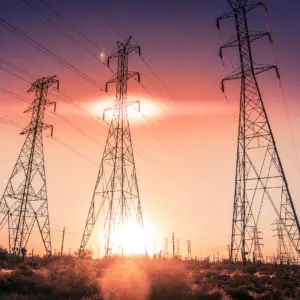Solar will make the grid harder to run
By SignOn San Diego
Electrical Testing & Commissioning of Power Systems
Our customized live online or in‑person group training can be delivered to your staff at your location.

- Live Online
- 12 hours Instructor-led
- Group Training Available
It was designed to work with big power plants, substations and wires leading to every house and business and for the power in those wires to flow from the generation plant to the customer.
But what happens when the customer is the generation plant? And what happens when there are tens of thousands of solar panels out there?
Power then flows both ways, affecting the amount and quality of electricity. As more and more solar panels are installed, the possible headaches for those who run the grid grows.
But the industry is working on it.
"There are tons of researchers working on this stuff," said Molly Sterkel, who oversees the state's solar subsidy program.
Along with the federal Department of Energy, Sterkel's agency, the California Public Utilities Commission brought together dozens of researchers, utility officials and solar company executives to La Jolla.
The goal of the two-day meeting at the Scripps Institution of Oceanography is to figure out how the electric grid can best handle the addition of lots of solar panels.
The PUC is spending $50 million over several years on the research. The Department of Energy is putting $42 million this fiscal year.
With the number of solar installations increasing, the impacts will grow.
More than 77 percent of San Diego Gas & Electric's circuits have solar panels on them.
By 2020, there will be times of the day when some San Diego neighborhoods will produce more power than they use, said Tom Bialek, chief engineer of smart grid for SDG&E.
The problem isn't in the middle of the summer, when the panels are making lots of power and people are using electricity for air conditioning.
It's at times like April, when the sun shines brightly, but the temperature is comfortable, and the solar power can become a big chunk of the power on the grid.
Partly cloudy days are particularly problematic, Bialek said.
For example, he described how a single large installation in the county, a one-megawatt array, fluctuated from making 700 kilowatts to making nothing on a second-by-second basis as clouds passed by.
That caused the voltage on the circuit to which it's connected to fluctuate beyond the standards, as more power had to be brought in to deal with it.
Voltage is a function of how much power is on a system and where it comes from fluctuations can cause malfunctions for customers.
And things will get even more interesting if, as SDG&E predicts, people turn to plug-in cars in larger numbers. Many of those who will drive electric also own rooftop solar panels.
So, what can be done about it?
There's no silver bullet, but researchers are working on a variety of solutions that include better forecasting, energy storage and more information about how the grid works.
Tracking clouds as they move across a city will give the utility a better idea of where and when solar generation will happen. Forecasting customer behavior — like when people plug in their cars — will help.
But information gathered from smart meters and sensors and weather stations around a region will also give a better picture of what's happening on the grid.
And when power production suddenly drops, something has to make up for it. That can include power plants that have turbines already spinning and ready to put juice on the grid, but also storage in capacitors or batteries near customers.
These changes will also affect how much it costs to run the grid and who has to pay for it.
Most solar customers right now put extra power they make during the day on the grid, then draw power at night when the sun is not shining.
In effect, they're using the grid as a giant battery.
Right now, the cost of the wires, cables and substations is included as part of the electricity, the actual energy you use. But if people are making as much electricity as they use — or if they make more — they're not paying for the cost of running the grid.











